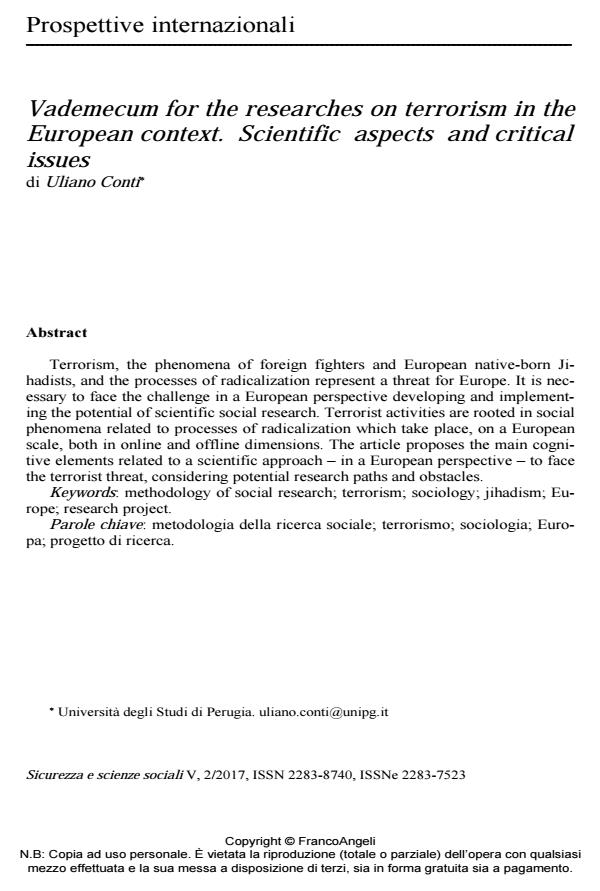Vademecum for the researches on terrorism in the European context. Scientific aspects and critical issues
Journal title SICUREZZA E SCIENZE SOCIALI
Author/s Uliano Conti
Publishing Year 2017 Issue 2017/2
Language Italian Pages 16 P. 125-140 File size 176 KB
DOI 10.3280/SISS2017-002008
DOI is like a bar code for intellectual property: to have more infomation
click here
Below, you can see the article first page
If you want to buy this article in PDF format, you can do it, following the instructions to buy download credits

FrancoAngeli is member of Publishers International Linking Association, Inc (PILA), a not-for-profit association which run the CrossRef service enabling links to and from online scholarly content.
Terrorism, the phenomena of foreign fighters and European native-born Jihadists, and the processes of radicalization represent a threat for Europe. It is necessary to face the challenge in a European perspective developing and implement-ing the potential of scientific social research. Terrorist activities are rooted in social phenomena related to processes of radicalization which take place, on a European scale, both in online and offline dimensions. The article proposes the main cognitive elements related to a scientific approach - in a European perspective - to face the terrorist threat, considering potential research paths and obstacles.
Keywords: Methodology of social research; terrorism; sociology; jihadism; Europe; research project.
Uliano Conti, Vademecum for the researches on terrorism in the European context. Scientific aspects and critical issues in "SICUREZZA E SCIENZE SOCIALI" 2/2017, pp 125-140, DOI: 10.3280/SISS2017-002008